A plasma membrane-associated form of the androgen receptor enhances nuclear androgen signaling in osteoblasts and prostate cancer cells
- PMID: 38289986
- PMCID: PMC10916501
- DOI: 10.1126/scisignal.adi7861
A plasma membrane-associated form of the androgen receptor enhances nuclear androgen signaling in osteoblasts and prostate cancer cells
Abstract
Androgen binding to the androgen receptor (AR) in the cytoplasm induces the AR to translocate to the nucleus, where it regulates the expression of target genes. Here, we found that androgens rapidly activated a plasma membrane-associated signaling node that enhanced nuclear AR functions. In murine primary osteoblasts, dihydrotestosterone (DHT) binding to a membrane-associated form of AR stimulated plasma membrane-associated protein kinase G type 2 (PKG2), leading to the activation of multiple kinases, including ERK. Phosphorylation of AR at Ser515 by ERK increased the nuclear accumulation and binding of AR to the promoter of Ctnnb1, which encodes the transcription factor β-catenin. In male mouse osteoblasts and human prostate cancer cells, DHT induced the expression of Ctnnb1 and CTNN1B, respectively, as well as β-catenin target genes, stimulating the proliferation, survival, and differentiation of osteoblasts and the proliferation of prostate cancer cells in a PKG2-dependent fashion. Because β-catenin is a master regulator of skeletal homeostasis, these results explain the reported male-specific osteoporotic phenotype of mice lacking PKG2 in osteoblasts and imply that PKG2-dependent AR signaling is essential for maintaining bone mass in vivo. Our results suggest that widely used pharmacological PKG activators, such as sildenafil, could be beneficial for male and estrogen-deficient female patients with osteoporosis but detrimental in patients with prostate cancer.
Conflict of interest statement
Figures
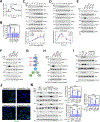
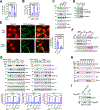
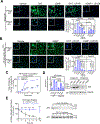
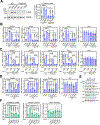
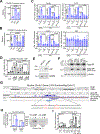
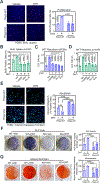
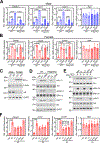

Similar articles
-
Changes in androgen receptor nongenotropic signaling correlate with transition of LNCaP cells to androgen independence.Cancer Res. 2004 Oct 1;64(19):7156-68. doi: 10.1158/0008-5472.CAN-04-1121. Cancer Res. 2004. PMID: 15466214
-
Paxillin regulates androgen- and epidermal growth factor-induced MAPK signaling and cell proliferation in prostate cancer cells.J Biol Chem. 2010 Sep 10;285(37):28787-95. doi: 10.1074/jbc.M110.134064. Epub 2010 Jul 13. J Biol Chem. 2010. PMID: 20628053 Free PMC article.
-
Functional localization and competition between the androgen receptor and T-cell factor for nuclear beta-catenin: a means for inhibition of the Tcf signaling axis.Oncogene. 2003 Aug 28;22(36):5602-13. doi: 10.1038/sj.onc.1206802. Oncogene. 2003. PMID: 12944908
-
Multifaceted interaction between the androgen and Wnt signaling pathways and the implication for prostate cancer.J Cell Biochem. 2006 Oct 1;99(2):402-10. doi: 10.1002/jcb.20983. J Cell Biochem. 2006. PMID: 16741972 Review.
-
Crosstalk between androgen receptor and protein kinase G signaling in bone: implications for osteoporosis therapy.Trends Pharmacol Sci. 2025 Mar;46(3):279-294. doi: 10.1016/j.tips.2025.01.007. Epub 2025 Feb 25. Trends Pharmacol Sci. 2025. PMID: 40011087 Review.
Cited by
-
Decoding androgen receptor signalling: Genomic vs. non-genomic roles in prostate cancer.Neoplasia. 2024 Dec;58:101066. doi: 10.1016/j.neo.2024.101066. Epub 2024 Oct 13. Neoplasia. 2024. PMID: 39405603 Free PMC article.
References
-
- Ahluwalia A, Hoa N, Ge L, Blumberg B, Levin ER, Mechanisms by Which Membrane and Nuclear ER Alpha Inhibit Adipogenesis in Cells Isolated From Female Mice. Endocrinology 161, (2020). - PubMed
-
- Thomas P, Membrane Androgen Receptors Unrelated to Nuclear Steroid Receptors. Endocrinology 160, 772–781 (2019). - PubMed
MeSH terms
Substances
Grants and funding
LinkOut - more resources
Full Text Sources
Medical
Molecular Biology Databases
Research Materials
Miscellaneous

